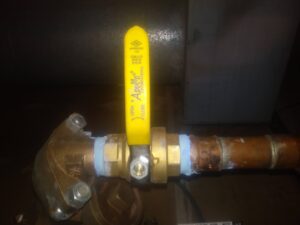Understanding Ball Valves: Essential Components for Reliable Plumbing Systems
Rick Aton of Excellent Plumbing, Heating & Mechanical | [email protected]
Ball valves are available in various styles and materials, with the most crucial component being the ball itself. The ball, similar to a ball bearing with a hole drilled through it, is one of the most effective mechanisms for stopping the flow of water. This design is a requirement in plumbing codes for many applications involving various liquids and gases.
Materials and Sizes
Ball valves come in different materials such as brass, bronze, stainless steel, and PVC. They are available in multiple sizes to accommodate a range of applications, including drains, fill valves, and purge tees.
Handle Types
Handle types include lever handles, tee handles, and oval handles, among others, providing flexibility for various uses and preferences.
Port Types
Full port ball valves feature oversized balls, allowing for maximum flow equivalent to the pipe size they are connected to. Standard port valves, slightly smaller than full port, offer increased durability and a longer lifespan, unless code requires a full port.
Connections
Connections can be threaded, sweat, PEX crimped, clamped, PEX press, ProPress, or PVC with solvent and threaded ends. Push-fit connections are available for copper, CPVC, and PEX in various brands, offering a range of installation options.
Configurations
Ball valves are available in one-piece, two-piece, and three-piece configurations, capable of handling pressures from zero to a thousand pounds. One-piece valves are typically more budget-friendly and suitable for applications not requiring full port features. Two-piece valves allow for easy disassembly and cleaning, making them versatile for various applications. Three-piece valves, although more costly and typically used in commercial or industrial settings, are superior due to their ease of rebuilding but are generally unnecessary for most residential applications.
Applications
The inclusion of ball valves in plumbing codes has been one of the most beneficial requirements. In a plumbing emergency, a reliable shutoff valve is crucial to prevent further damage. Therefore, it is advisable to install ball valves, especially on your meter, to ensure safety before an emergency occurs.
Conclusion and Safety Advice
In summary, the best advice is to ensure you have ball valves installed on all essential connections, particularly your water meter. Safety first—prepare before an emergency, not after!











